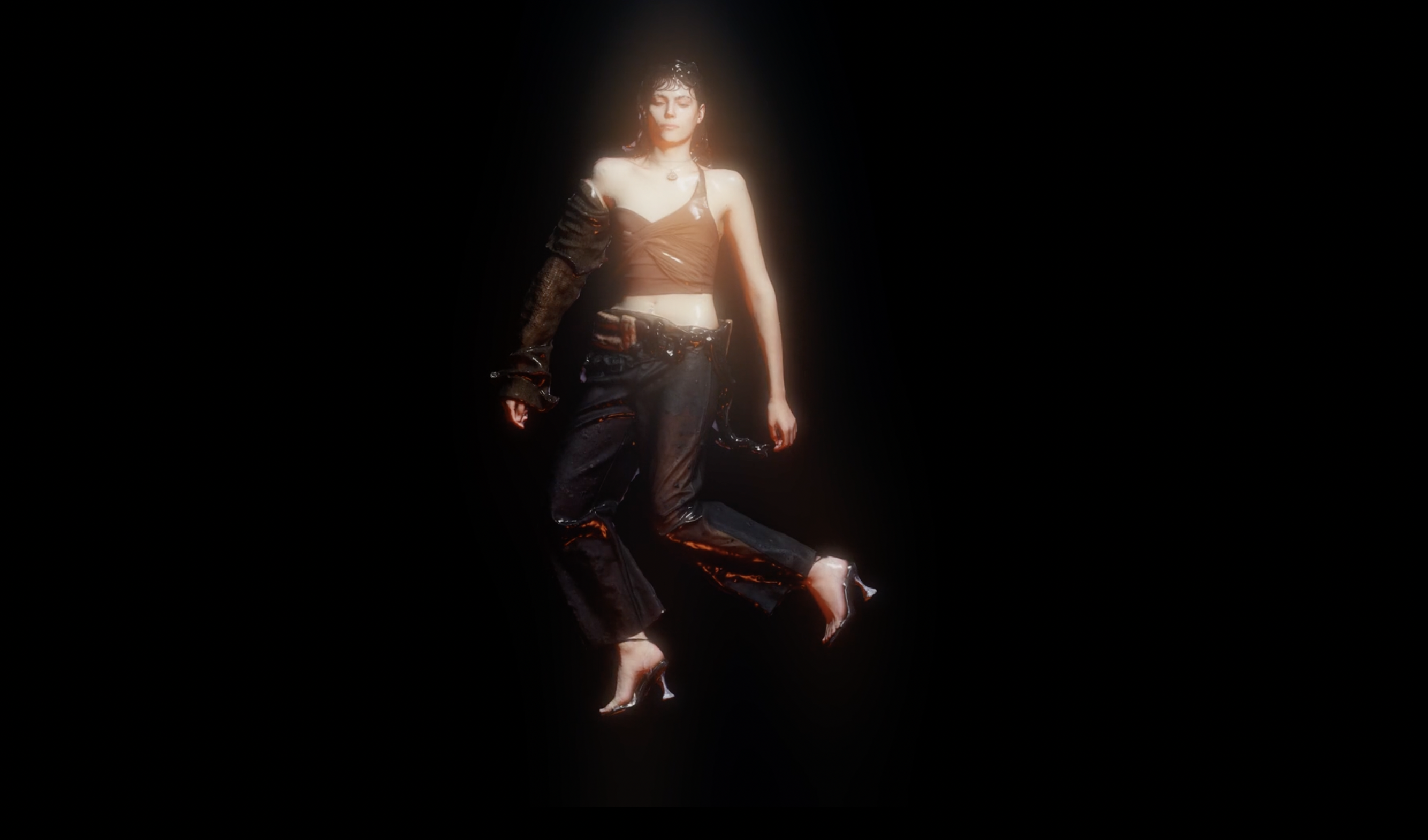
In the frame of the Atopia residencies, Rokolectiv brought together SHAPE+ Spanish musician Bella Báguena and visual artists Thea Lazăr and Adrian Ganea to work together on a new video and live performance. On this occasion, we got to chat a bit with Adrian Ganea and Thea Lazăr about their artistic practice, sources of inspiration, fantasy tropes, cars, AI, and the future of the “digital” in visual arts.
Thea Lazăr
How would you define your artistic practice?
I’m always trying to tell a story through my work, often drawing from the fascinating tales of the flora around me and building narratives that reflect both personal and universal experiences. I see most of the world through a lens of nostalgia, and I think that translates into my work by merging past experiences and aesthetics that clash with my excitement for current technology. I work in a variety of mediums that are all rooted in a digital practice that branched out into videos, 3D animation, multimedia installations and even textiles and embroidery.
What are you working on at the moment?
I’m preparing new work for the busy fall to come, producing a new video, and conceptualizing and sewing new textile work among others. I’m also very excited to start a new needlepoint embroidery that is one of the more time consuming things I do, requiring months of hand stitching.
How do you see the future of the “digital” in visual arts, in the new AI development contexts?
I think the digital in visual arts comes and goes in waves like many other disciplines and trends. AI is a very powerful tool that I feel can be used in very cool ways or it can fall into cliché, and become very tacky. But at the end of the day it’s still the artist that’s most important in the equation, and the way we use the tools at our disposal.
What inspires you these days?
I love cars and driving and motorsports, and I feel that this passion has to somehow bleed into my work too. I see cars as aesthetic objects, works of art with a rich history worth exploring from a cultural perspective. I love their texture and materiality, oftentimes I see car parts as shiny pieces of jewellery.
Adrian Ganea
How would you define your artistic practice?
As chronically dramatic. Having a strong relation with dramatic arts, and at the same time being sort of chronically online, I try to make sense of all the things around me through the language of performativity and digital culture. While working with theatre texts or literature or sometimes made-up narratives, my reaction is to get lost and wander towards unexpected paths. Or, in other words, I like to experiment. The way I relate to a subject or material is to think of it as essentially transformative. And as my practice often involves stories, it’s mostly a way to read various forms of fiction and reassemble and materialize them through the subjectivity of technologies.
Last year you had a solo show at Plan B gallery, in Berlin. How is your relationship with the art market?
I had a really good experience with Plan B that did draw some curious eyes. In relation to the art market it really made me more aware of the autonomy an artist has over their own work when the conditions for making and showing art are in what it feels like an ideal form. I am very thankful and feel quite privileged for having this level of care for my work that in return gave me a lot of trust in the fact that the work of artists is quite valuable.
Fantasy plays a big part in your practice. How do you see these fantasy tropes evolving within contemporary arts?
As we feel a constant challenge of the status-quo, and an approaching significant turn in the way we organize ourselves in relation to otherness, I feel like fantasy plays a huge part in shaping narratives for what is yet to come. Dominating these fantasy tropes in the present, and probably for some of the foreseeable future, is mostly based on nostalgia. It can be a historical fantasy or an imaginary future but it’s mostly nonstop nostalgia.
What inspires you these days?
I saw not so long ago the 2007 anime series called Claymore, and it was quite amazing and very inspiring. From about the same time there is a TV show called Kid Nation that I also saw recently, and it was a memorable experience. The Blazing World by Margaret Cavendish written in 1666 is also a story that stuck with me recently.
Originally appeared on Kajet Magazine.